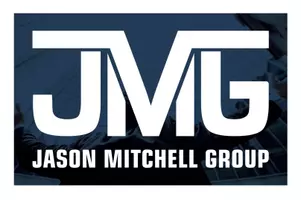Guest commentary: Tax law changes ahead: Why now is the time to maximize your philanthropic impact
As the president and CEO of the Rancho Santa Fe Foundation, I have the privilege of working with individuals and families whose generosity plays a crucial role in supporting some of the most important causes in our region and around the world. Philanthropy, especially in communities like ours, transcends financial contributions; it reflects our values, legacy, and purpose.
That’s why I want to draw your attention to a shift on the horizon that could impact how — and how much — we give. Changes to the federal tax code taking effect in 2026 will significantly alter the landscape for charitable deductions. And while these changes pose new limits, they also create a short but meaningful window of opportunity to plan ahead and have even greater impact.
Beginning in 2026, donors who itemize will face two key limitations:Only charitable contributions above 0.5% of adjusted gross income (AGI) will be deductible.The maximum tax deduction for high-income individuals will be reduced from 37% to 35%.On the surface, these may sound like minor adjustments. But for those who give at scale, these shifts can translate into real reductions in charitable capacity. Fortunately, there’s a clear path forward — and it starts now.
Through the end of 2025, today’s more favorable giving rules remain in place. Donors can still take advantage of the full 37% deduction, avoid the new AGI floor, and contribute appreciated assets — such as stock, real estate, or business interests — while eliminating capital gains and maximizing their philanthropic impact.
One of the most effective ways to do this is through a Donor Advised Fund (DAF). Contributing to a DAF before these changes take effect allows you to lock in the current tax benefits, receive an immediate deduction, and continue granting funds over time at your own pace — supporting the organizations and missions you care about most.
And once the new laws are in place, DAFs will remain a smart tool for high-capacity donors. They allow you to make large, strategic contributions in years when you exceed the new AGI floor, while maintaining the flexibility to grant funds year after year. For families thinking about legacy or multigenerational giving, DAFs provide a simple, mission-driven structure — without the complexity of a private foundation.
These changes are not just about numbers on a tax return. They’re about ensuring that the causes we care about most — the schools, hospitals, nonprofits, and community organizations that shape our region — continue to receive the support they need.
At the Rancho Santa Fe Foundation, our team works directly with fundholders and their advisors to develop giving strategies that are both tax-efficient and aligned with your values. Whether you are considering a significant gift, starting a family fund, converting your family foundation into a DAF, or looking to contribute complex assets, we are here to help you maximize the impact of your generosity.
If you’ve been thinking about how to deepen your impact, now is the time to act — before new laws take effect. Because while tax policy may change, your legacy doesn’t have to.
Ben Moraga is the president and CEO of the Rancho Santa Fe Foundation, a community foundation dedicated to helping fundholders achieve their charitable goals through personalized service and effective grantmaking.
Established in 1981, the RSF Foundation offers a range of philanthropic tools, including donor-advised funds, endowments, and community grants, to assist individuals, families, and nonprofits in maximizing their charitable impact. As a transparent and accountable 501(c)(3) public charity (Tax ID #95-3709639), the RSF Foundation manages over 350 funds and is committed to strengthening the philanthropic community.
Categories
Recent Posts










GET MORE INFORMATION


